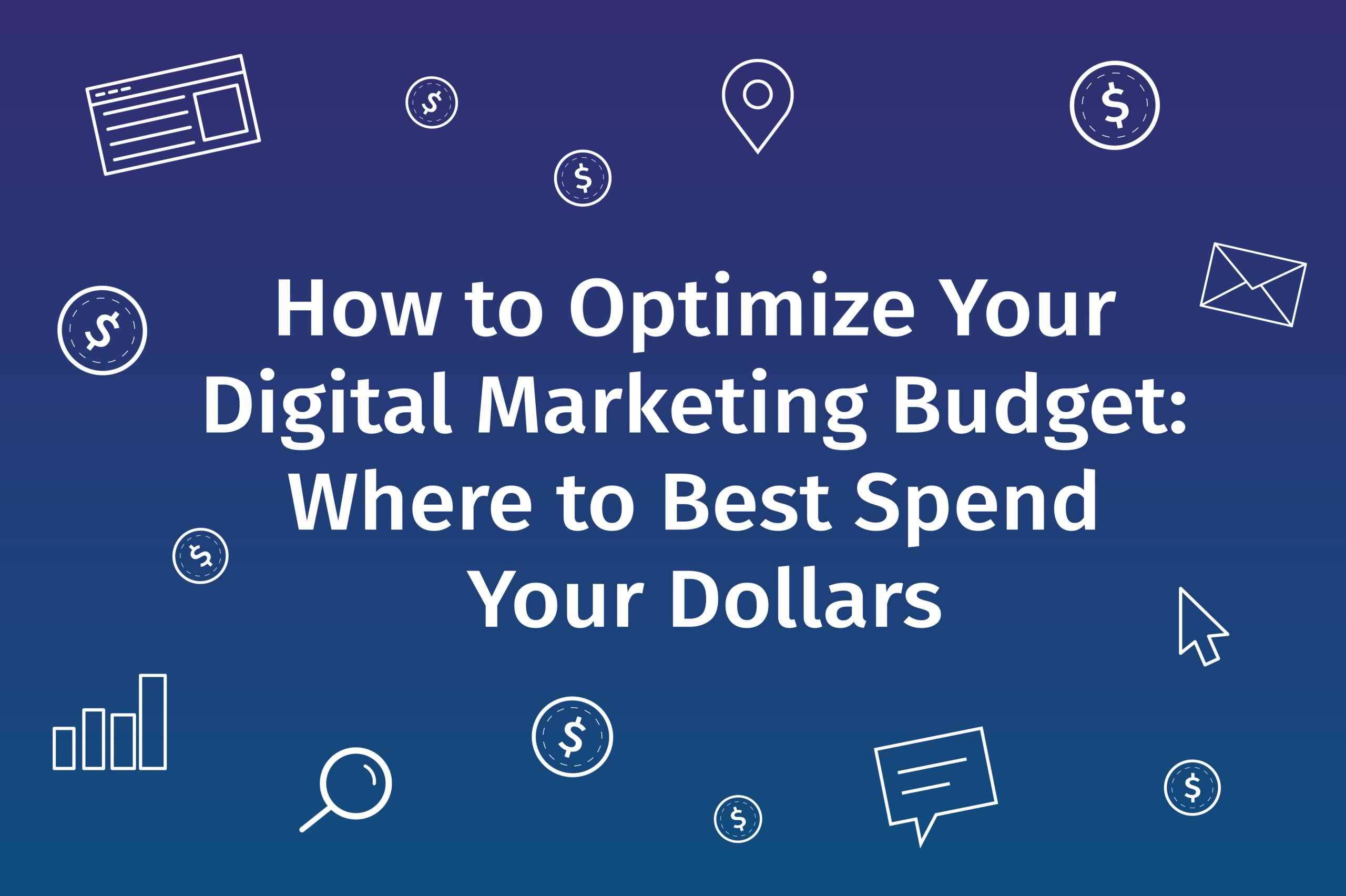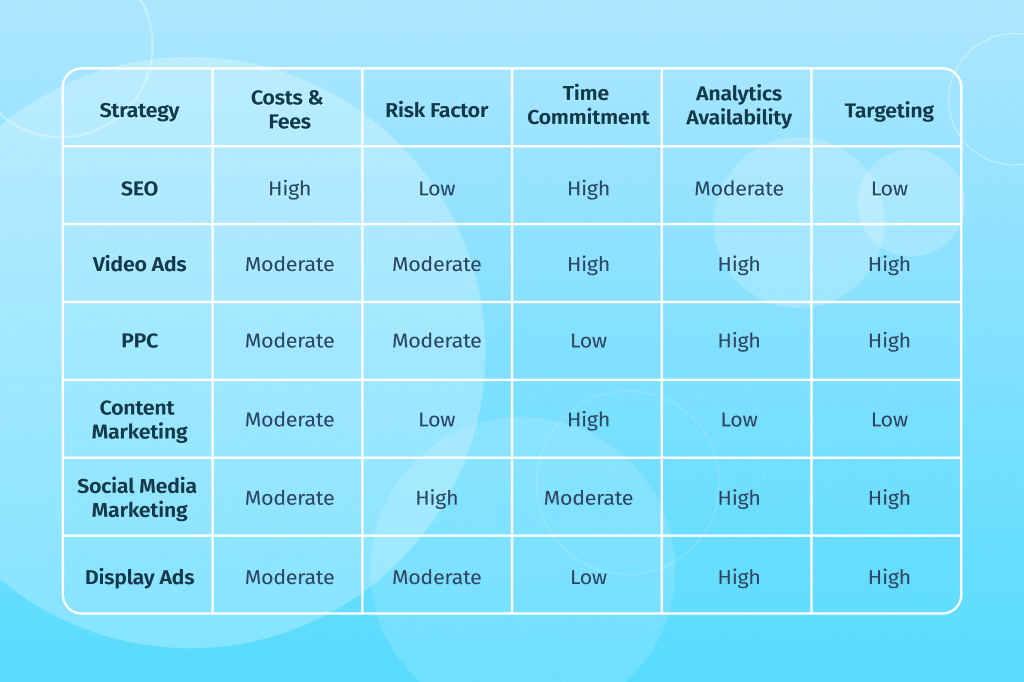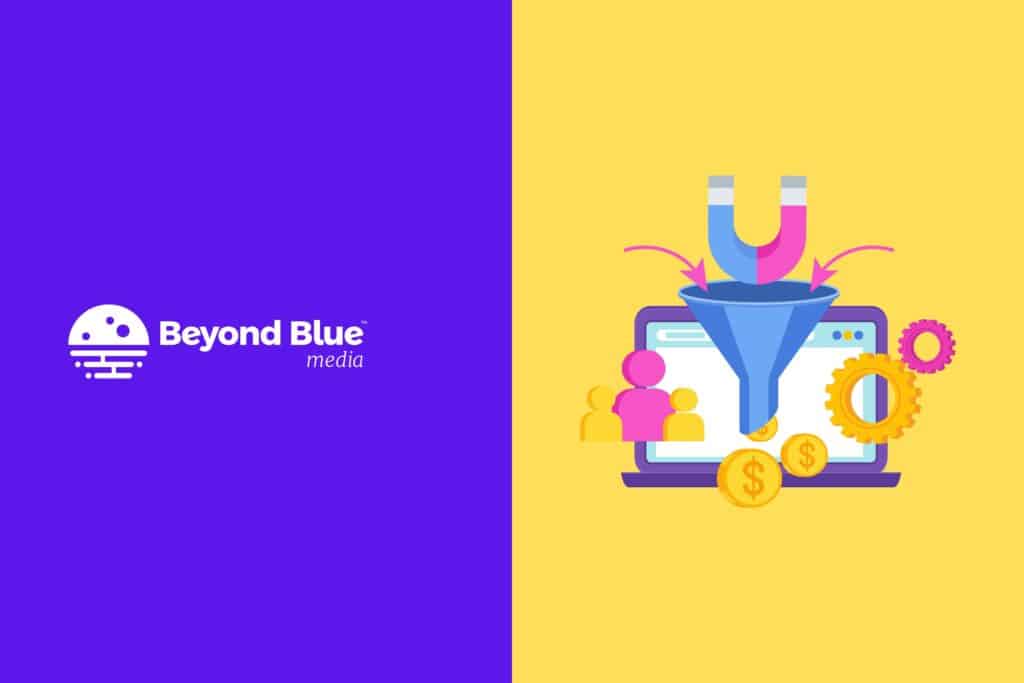
Digital marketing is the bread and butter of growing a small to medium-sized business.
There’s no doubt that you should be spending money to bolster your presence online but it can be difficult to know where to focus your efforts. If you’re just starting to look into digital marketing for your company, it’s easy to get bogged down by all the jargon.
With so many directions you can take your campaign it can be a dizzying process figuring out where to put your dollar. But don’t freak out! As experts in the digital marketing sphere, we are here to help you make sense of how to optimize your budget toward proper spending!
Why Digital Marketing?
As time goes on, more and more of our daily lives are intertwined with the internet. It’s our go-to resource for organizing our lives, shopping, answering our most burning questions, and so much more.
Your future clientele is online – that’s a guarantee.
In fact, 81% of customers start their search online before making a purchase.
Younger people are starting to do a lot more of their shopping online.
As of 2021, there are a whopping 3.78 billion social media users worldwide. This is a ripe playing field for businesses willing to explore digital marketing.
If you don’t invest in digital marketing, you’re missing out on valuable leads and revenue.
But simply having a presence online won’t be enough. How you format your budget and what you use those pressure dollars for will determine if you reach your customers.
How to Pick a Budget
As a general rule of thumb, most companies will spend anywhere from 7 - 10 percent of their overall yearly revenue on marketing. Of that percentage, a lot of companies opt to spend half if not more on digital marketing.
This isn’t to say that you have to spend upwards of 4 percent or below 10 percent of your revenue on digital marketing. Every company is unique and will require a different budget to be successful. Simply use these figures as a guide for what is typically spent on digital marketing.
So, this means that if you make $1 million per year in revenue, you should spend $70,000 or so in yearly marketing spending.
Understand Your Target Audience
There is no silver bullet for digital marketing. Every industry and every individual business will need to take a different approach to its strategy. (Never trust an agency that says that this isn’t the case, you can’t copy and paste campaigns and expect them to run the same.)
A big aspect of planning your marketing campaign is to identify your target audience. Spend some time really getting to know your ideal patron. Where do they go online? What social media channels do they frequent and what content do they tend to consume? Once you have a good understanding of where your target audience is, you’ll be better informed as to where to place your budget.
Research Your Options
You should know your digital marketing options well before you dive into budgeting. There are a myriad of places you can place your dollar when it comes to building up your online presence. Where your campaign will take you depends on who your audience is and where you think you’ll best reach them. Here are some examples of where you can focus your attention:
- Search engine optimization (SEO)
- Video advertising
- Pay-Per-Click (PPC) marketing
- Content marketing
- Social media marketing
- Display advertising
- Email marketing
Some experts in the field agree that “newer” more buzzworthy channels such as social media marketing, content marketing, video advertising, and marketing analytics will see an increase in spending in 2021 while more traditional methods such as SEO and display advertising will see the least amount of spending. This could be valuable information to inform your decision on where to put your dollar.

Some other factors that you should consider while researching your options are the necessary time commitment, the precision of audience targeting, any associated fees, risk factors, and how you will track progress.
Consider How You’ll Measure Your Goals
When investing money into marketing, you should keep an eye out for how well it’s serving you and your business. There are several ways to do this as you test the water with different marketing channels. Be sure to identify some key performance indicators (KPIs) tied to what you deem as a successful marketing campaign. It can be helpful to assign key stakeholders within your company -whether it's a team, department, or individual- to deliver on these goals.
Google Analytics is a vital tool in measuring where your leads are coming from and how successfully they’re converting. Some other channels such as social media have built-in analytics tracking you can utilize too. Be sure to keep a thorough record of your progress throughout your marketing campaign.
Regardless of how you get your data, borrow wisdom from the Pareto Principle to hone in on where your budget is best spent. This principle states that out of any number of outcomes, around 80% of consequences come from 20% of the causes. Look at which 20% of your digital marketing is gaining 80% or more of your positive results. This is where you should place the bulk of your budget.
Deciding Where to Spend Your Budget

Finally, the question we’ve all been waiting for: where should I put my marketing budget? There isn’t a one-size-fits-all conclusion in most cases. As we covered, there are many options to choose from when it comes to digital marketing. You’ll need to carefully try out your options to sort out where you should place your money. Take things one step at a time. Think of starting your digital marketing journey like taking a dip in the ocean for the first time. You’ll probably test out the temperature first. Then you might wade in up to your waist. Once you feel comfortable here, you can finally dive into the deep end.
Dipping Your Toes In
The last thing you want to do is spread yourself too thin when starting out in digital marketing. Take some time to test the water. See how well you can handle a smaller-scale campaign. Start out with a handful of reliable channels to focus on. SEO, content creation, and social media are great places to start. These methods aren’t necessarily pay-to-play until you start venturing into PPC and social media ads territory. Once you master your chosen channels, all the while getting to know your audience better, you can start to scale.
Wading Into the Shallows
Now that you’re feeling more confident with the direction you want to take your digital marketing, it’s time to wander a little further away from shore. This is where you can really start to test where your money should go. Experiment with new platforms or campaign types. In this phase, you can play around with strategies such as ad retargeting or video advertising. This is where you’ll really need to watch your budget and ROI. Pay attention to what’s working for you and what wasn’t worth the money.
Freestyling Into the Deep
Once you’re seeing significant profit from your digital marketing efforts, you can get a little riskier with your budget. Here you can start to add even more channels you might have felt hesitant to explore. You can also just put more money into an existing strategy. With the added profit from your previous successful campaigns, you can buffer any potential blunders as you continue to sort out where to spend your budget.
The 70-20-10 Rule
Another method you can use to format your budget is the 70-20-10 rule. It’s a breakdown of where to most effectively allocate your funds to optimize your budget.
70 percent of your budget should be spent on the strategies you know work well. These channels are tried and true. You know they resonate with your target audience and they reliably provide an ROI.
20 percent of your budget should go towards strategies that are new to your business. Maybe you’ve seen competitors try it and you’re ready to give it a shot yourself. These channels are generally well-known with a lot of resources surrounding how to properly execute them.
10 percent of your budget should be allocated to brand-new marketing trends. You can spend it on new technology or strategies that are intriguing but not well-known quite yet. This last portion of your funds is small by design so if you don’t see an ROI it won’t set you back too far.
Need Help Implementing Your Strategy?
Digital marketing requires staffing and even specialized training. This could involve hiring dedicated marketing team employees as well as investing in onboarding and crafting processes to support this team. It can be a lot for a small to medium-sized business to take on internally. If you need help planning and implementing your digital marketing strategy, Beyond Blue Media is here to help.
If you’re ready to optimize your budget to the highest degree possible, we are poised and ready to help. Whether you’re just starting out or you want to pivot your current marketing strategy Beyond Blue Media is on the job. Get in touch today to see where we can take your digital marketing journey!


